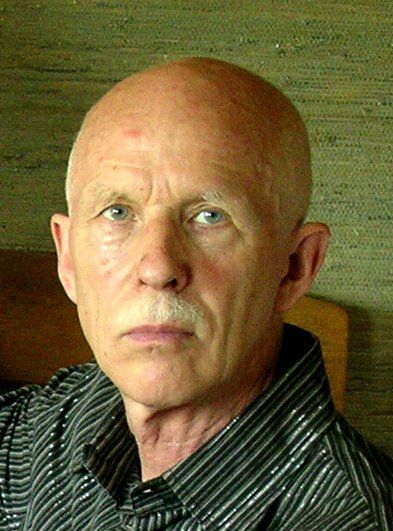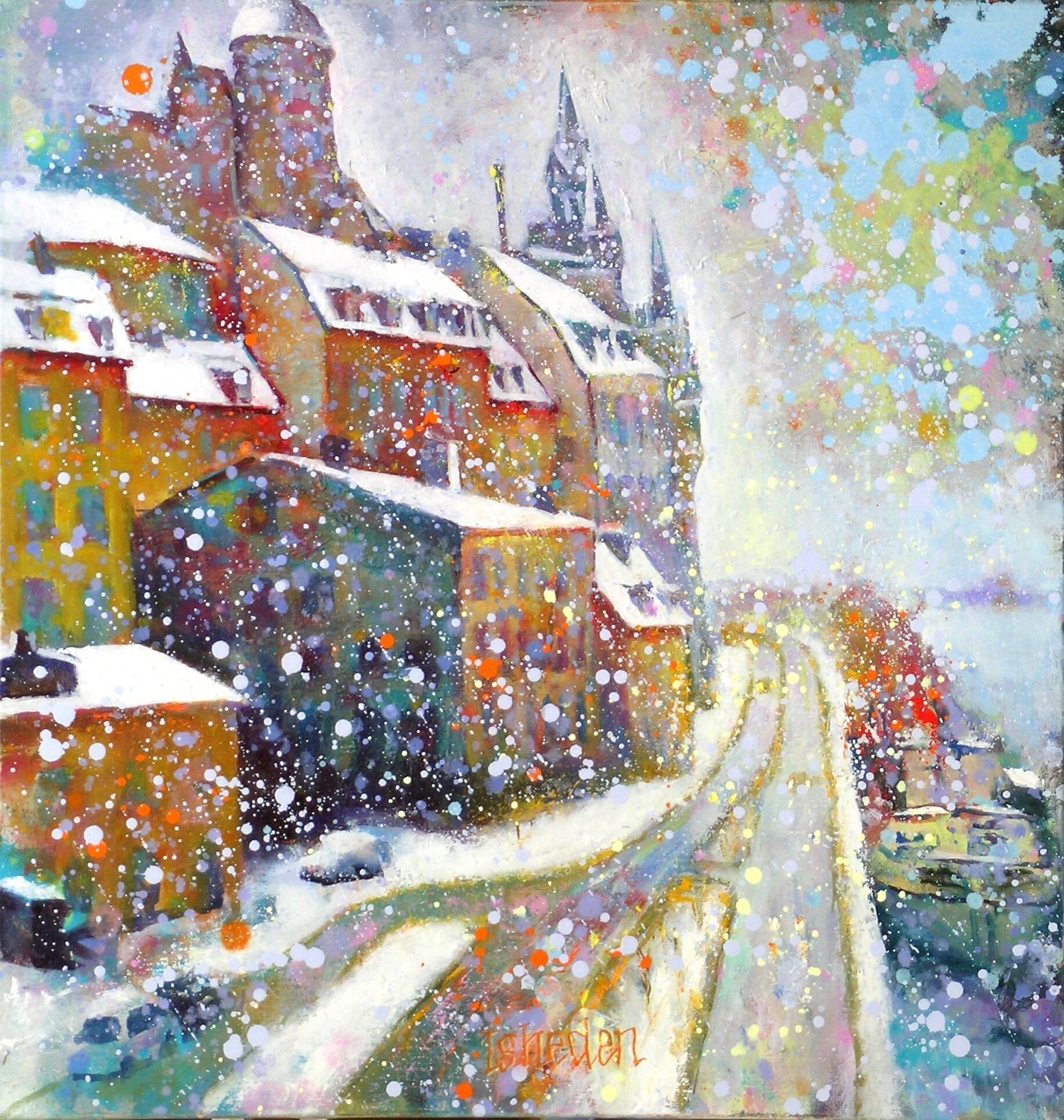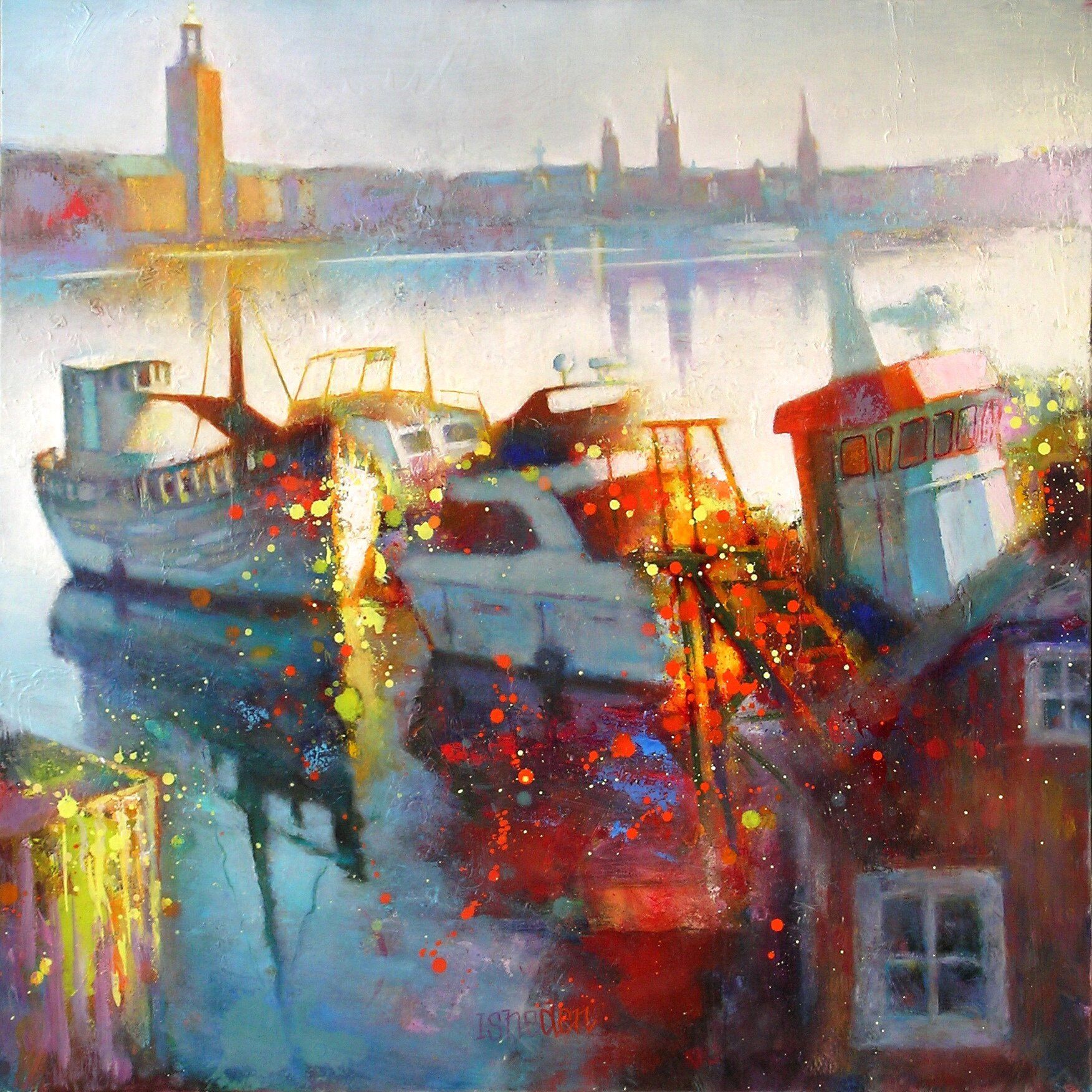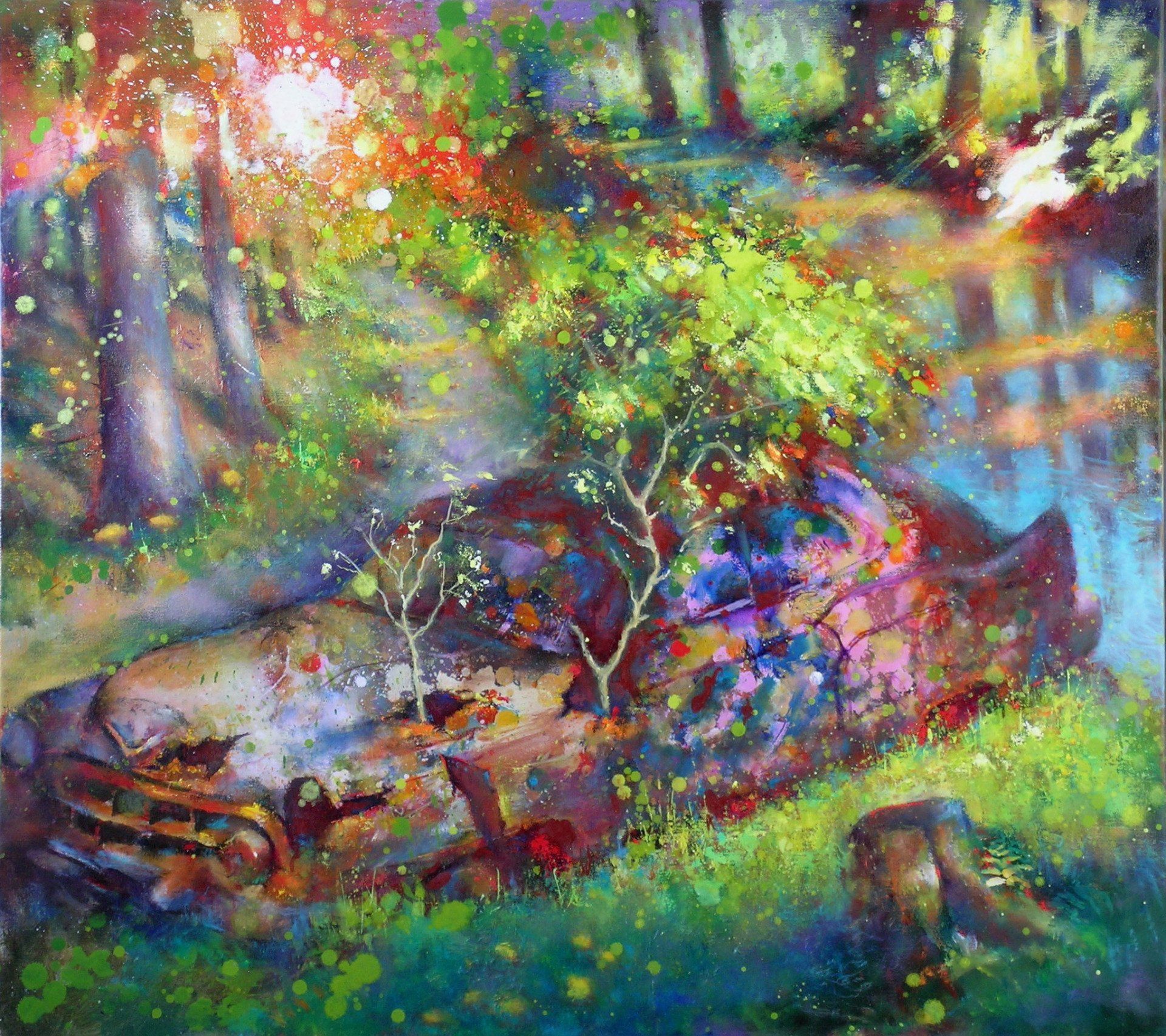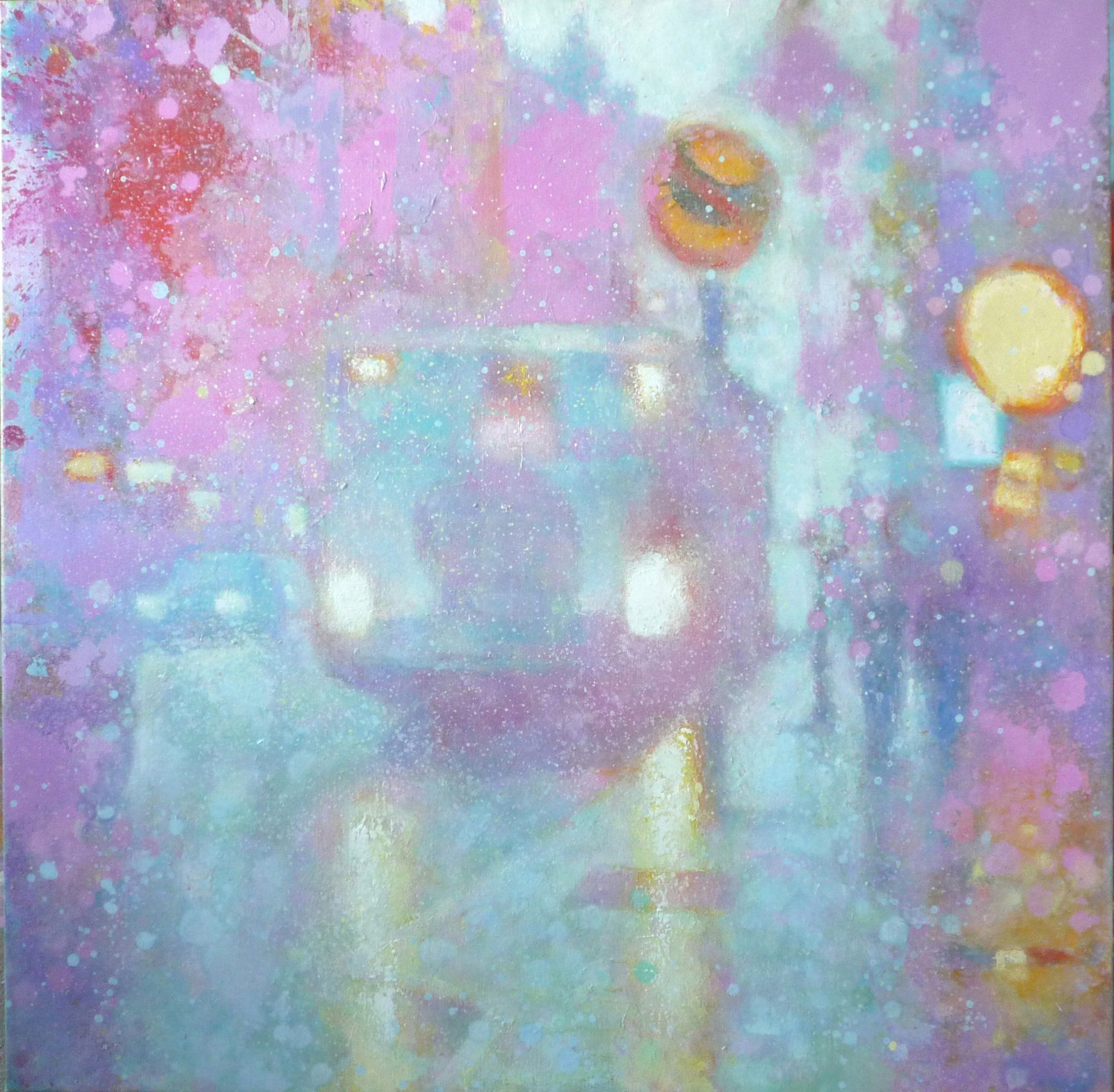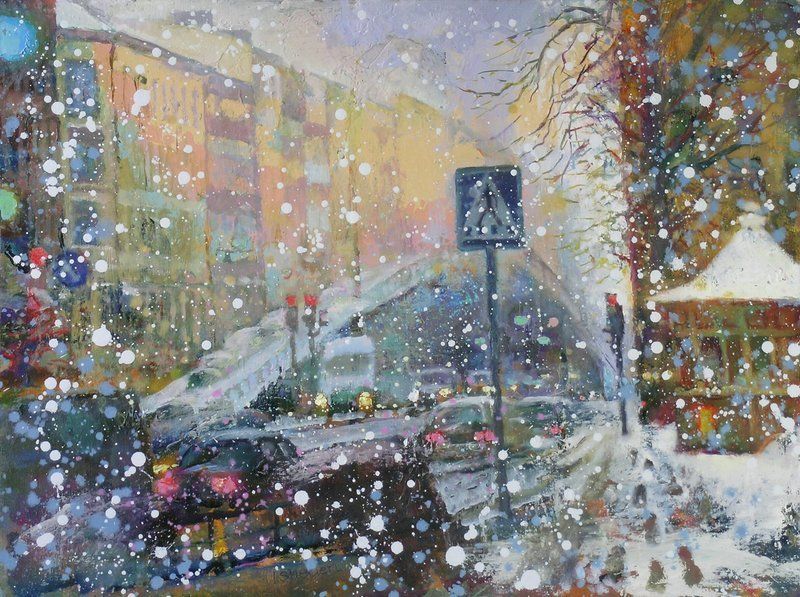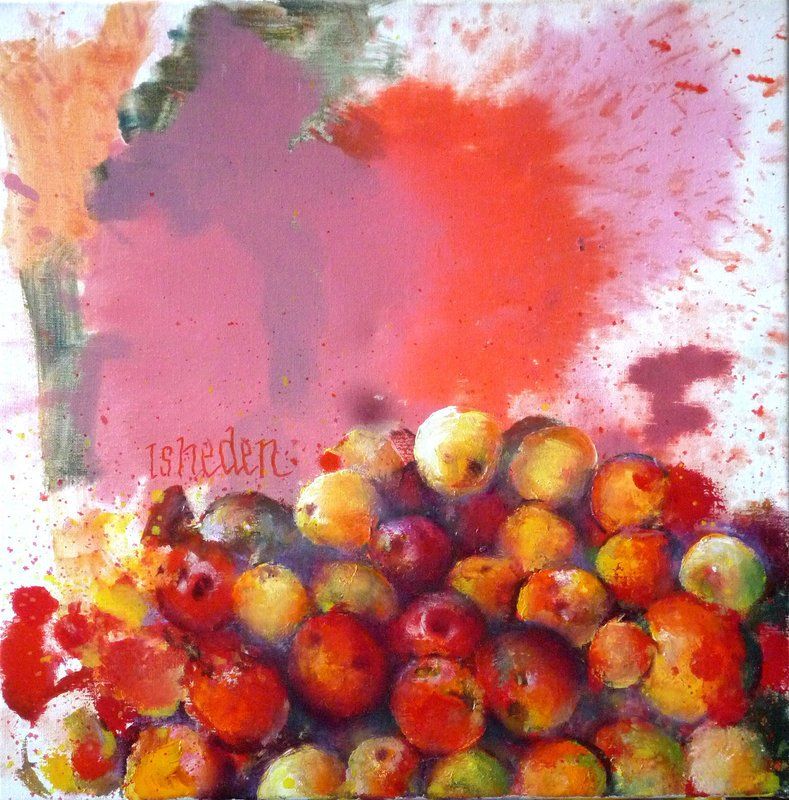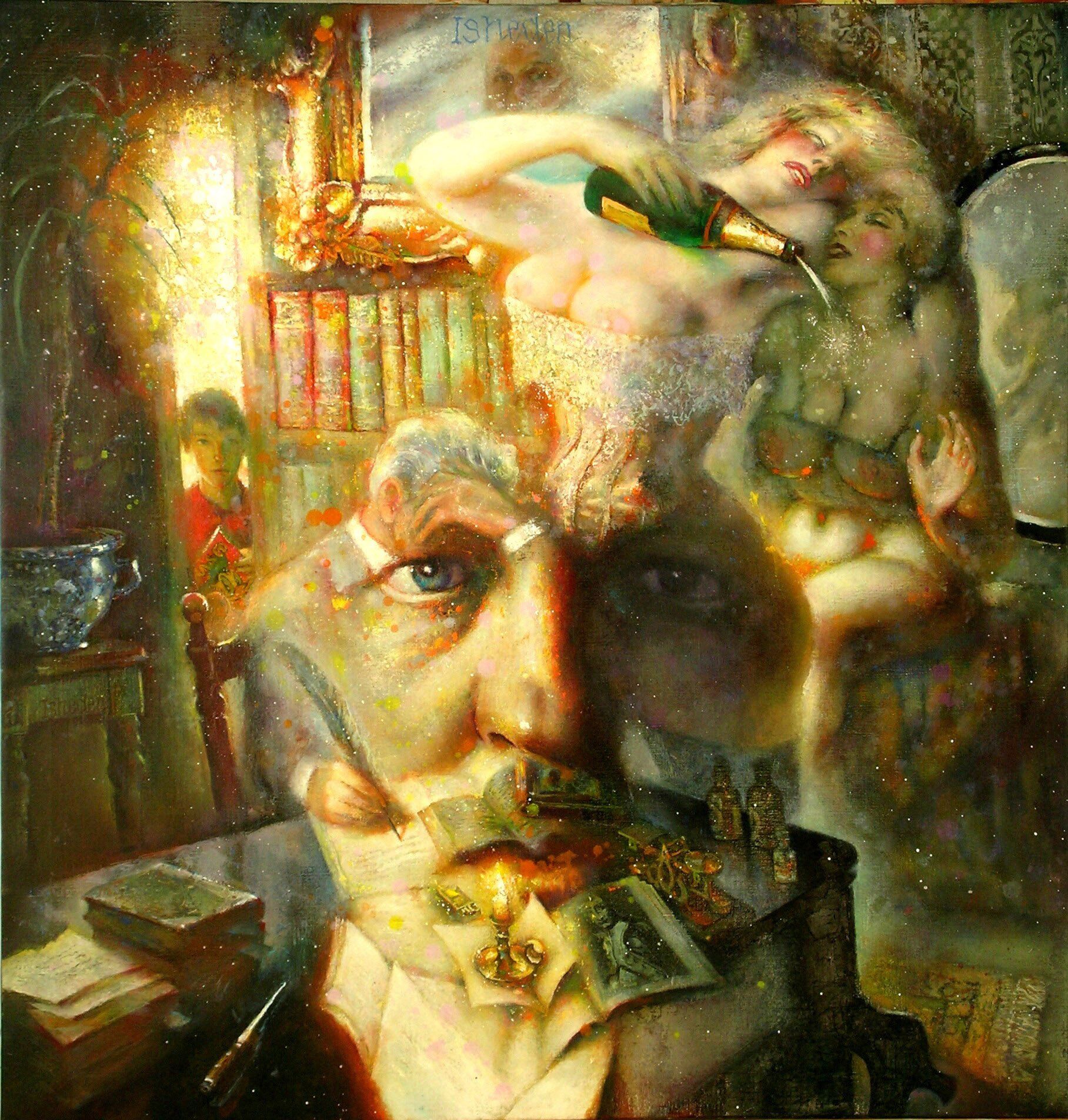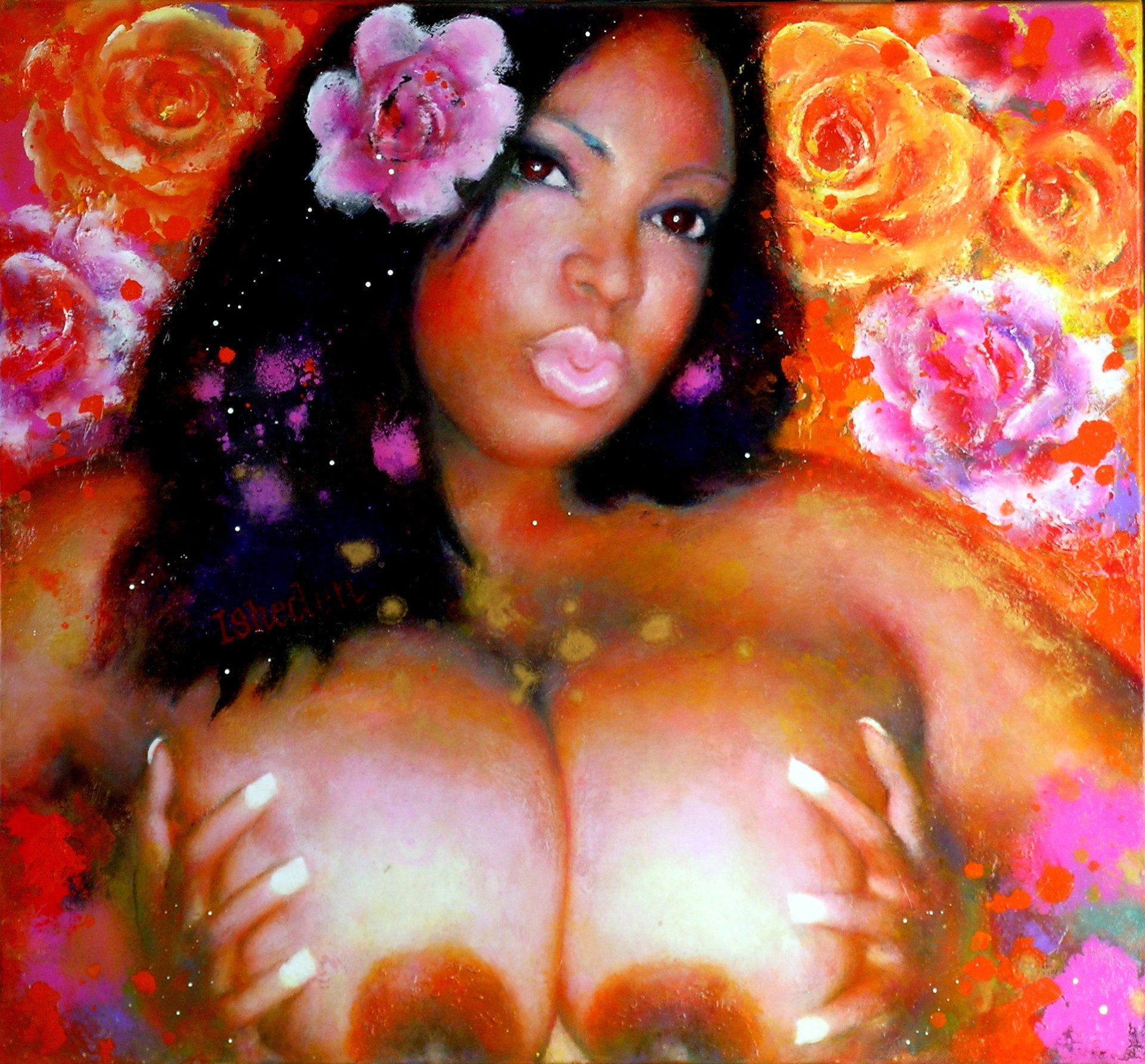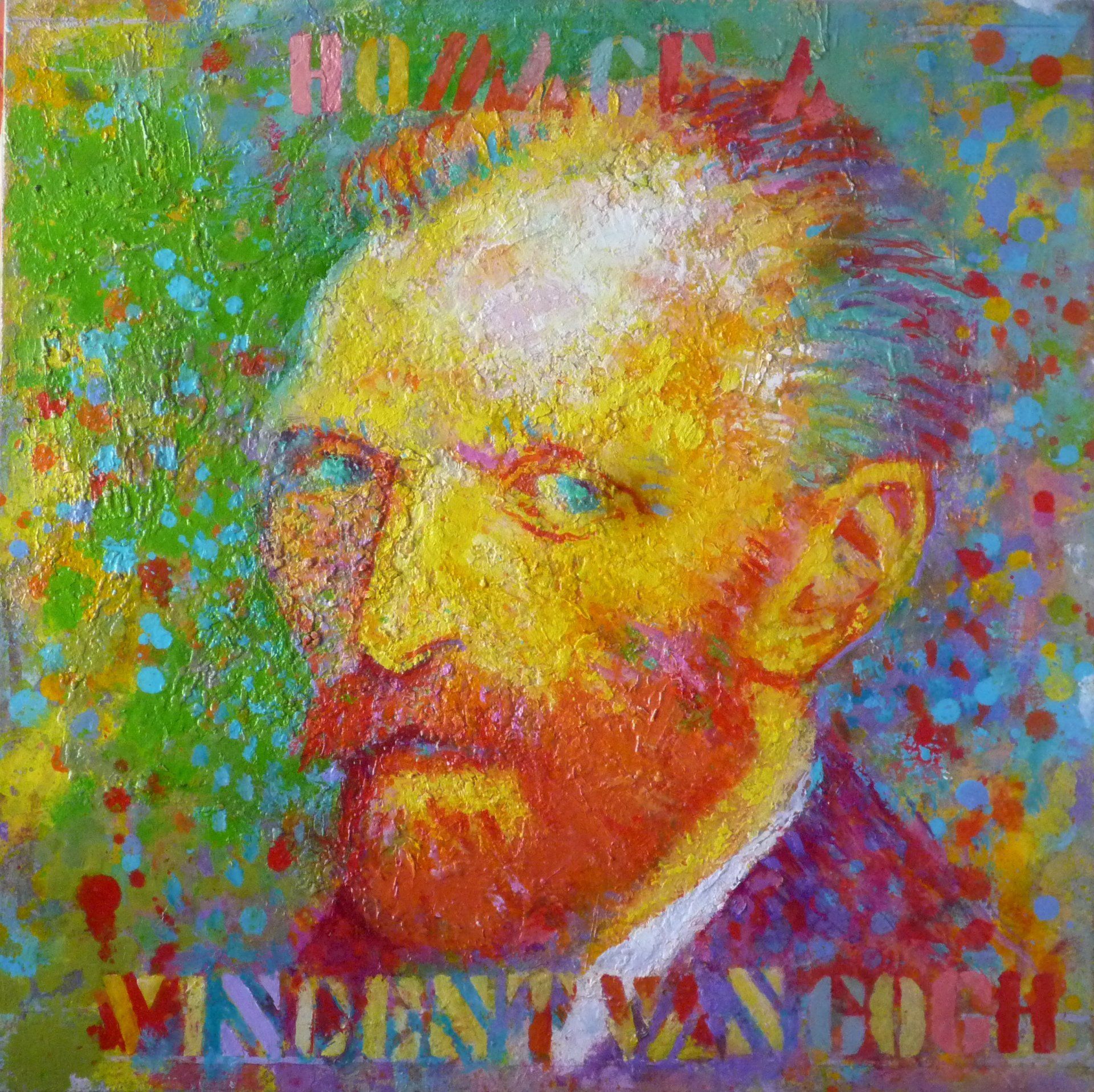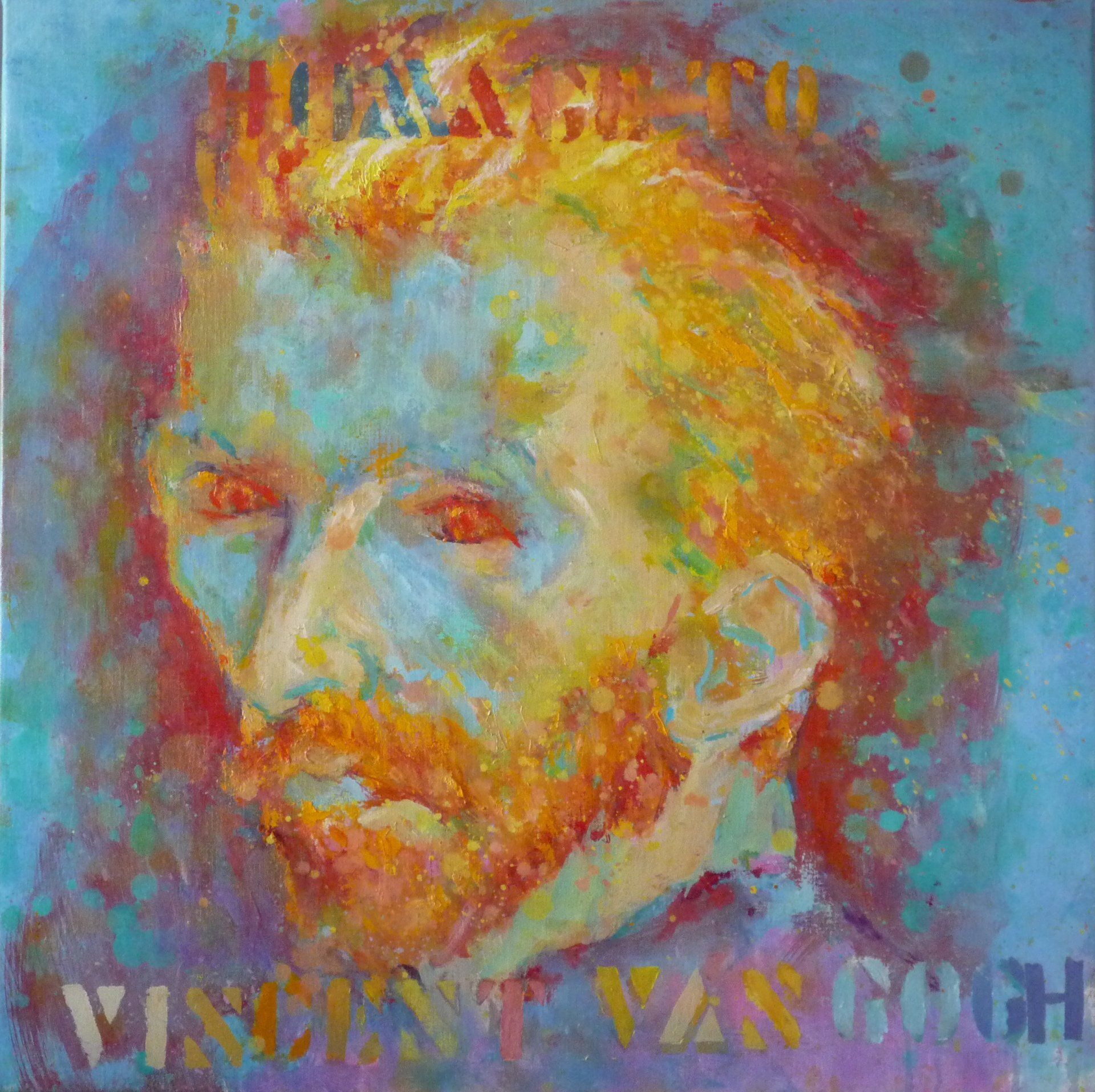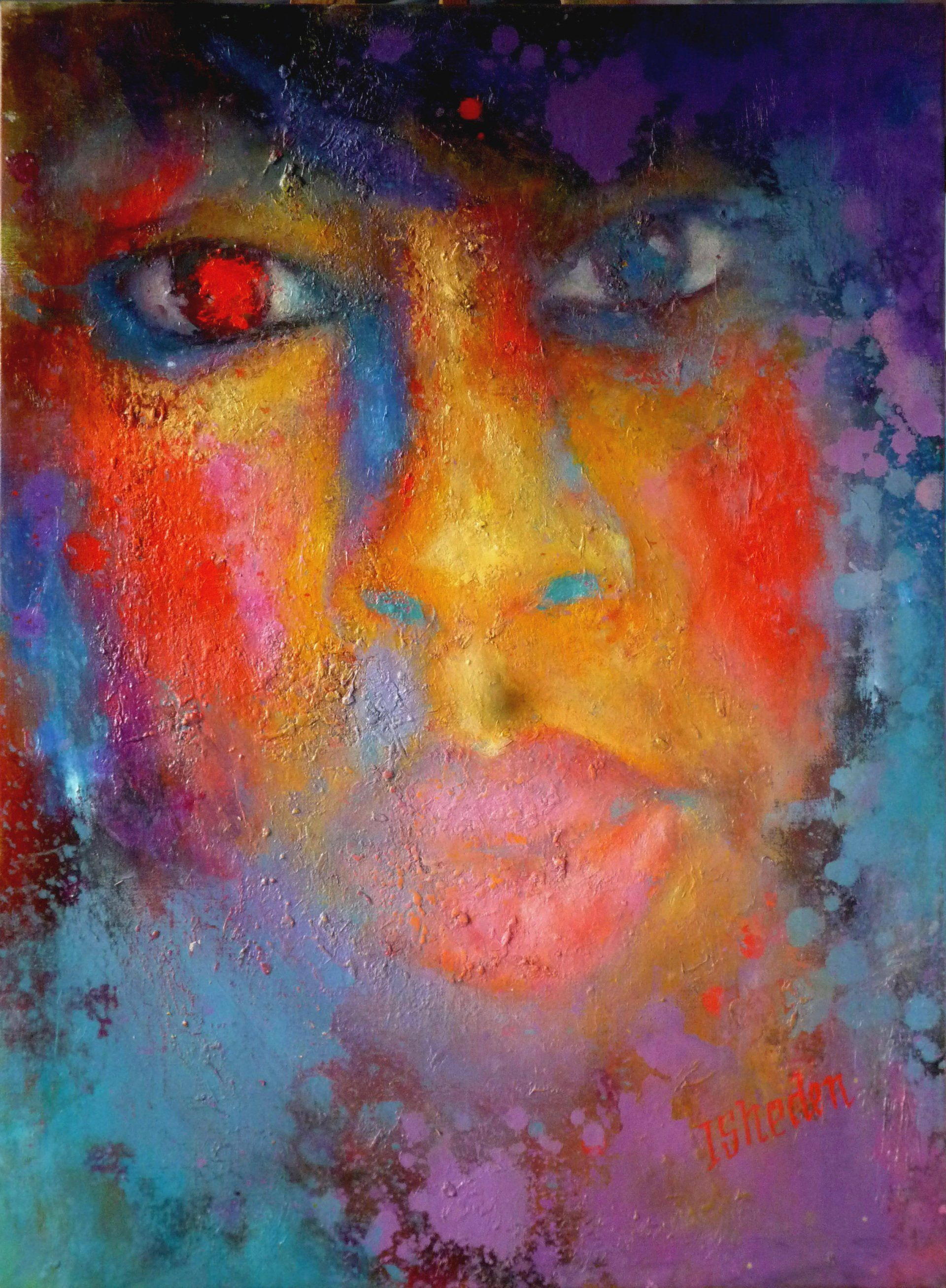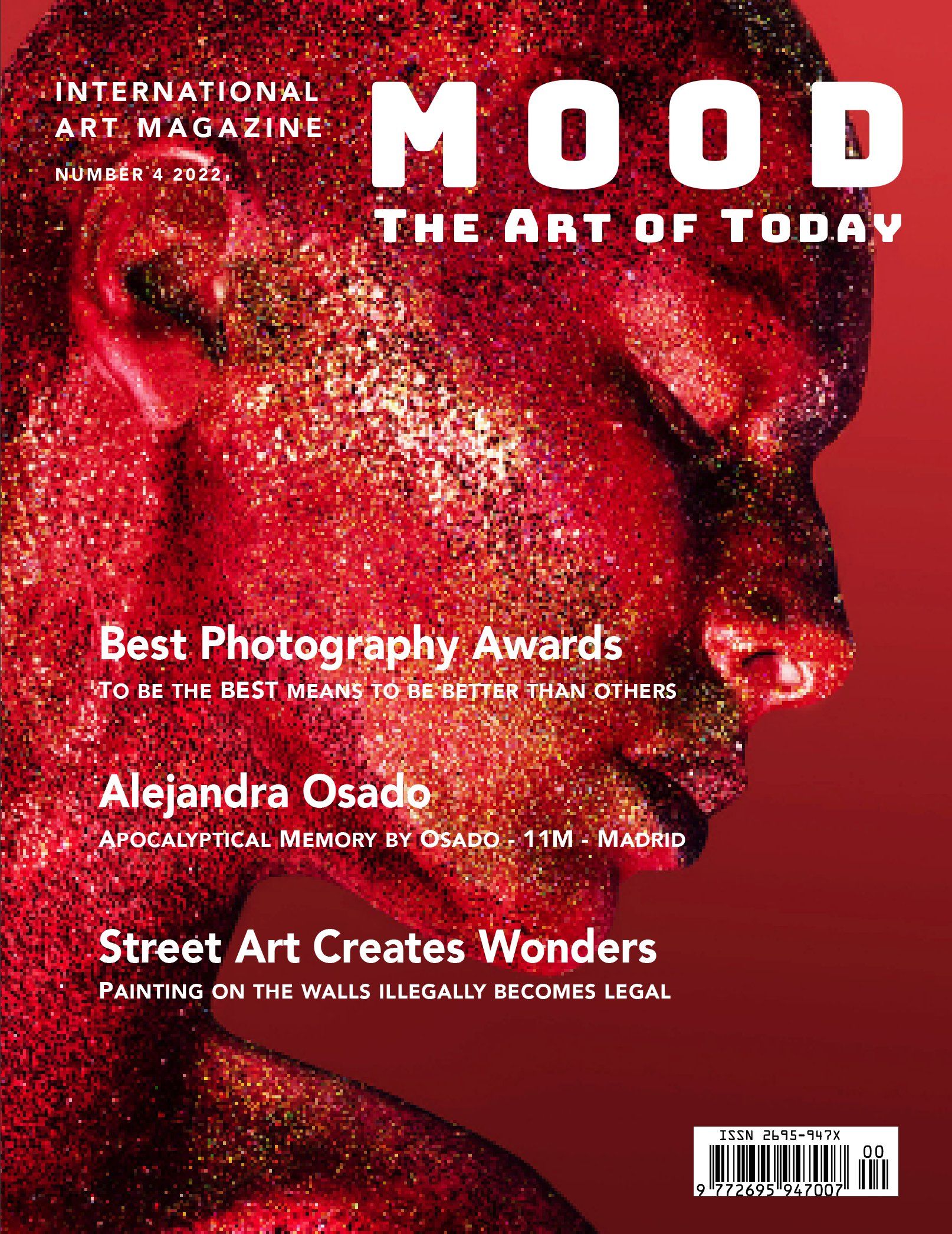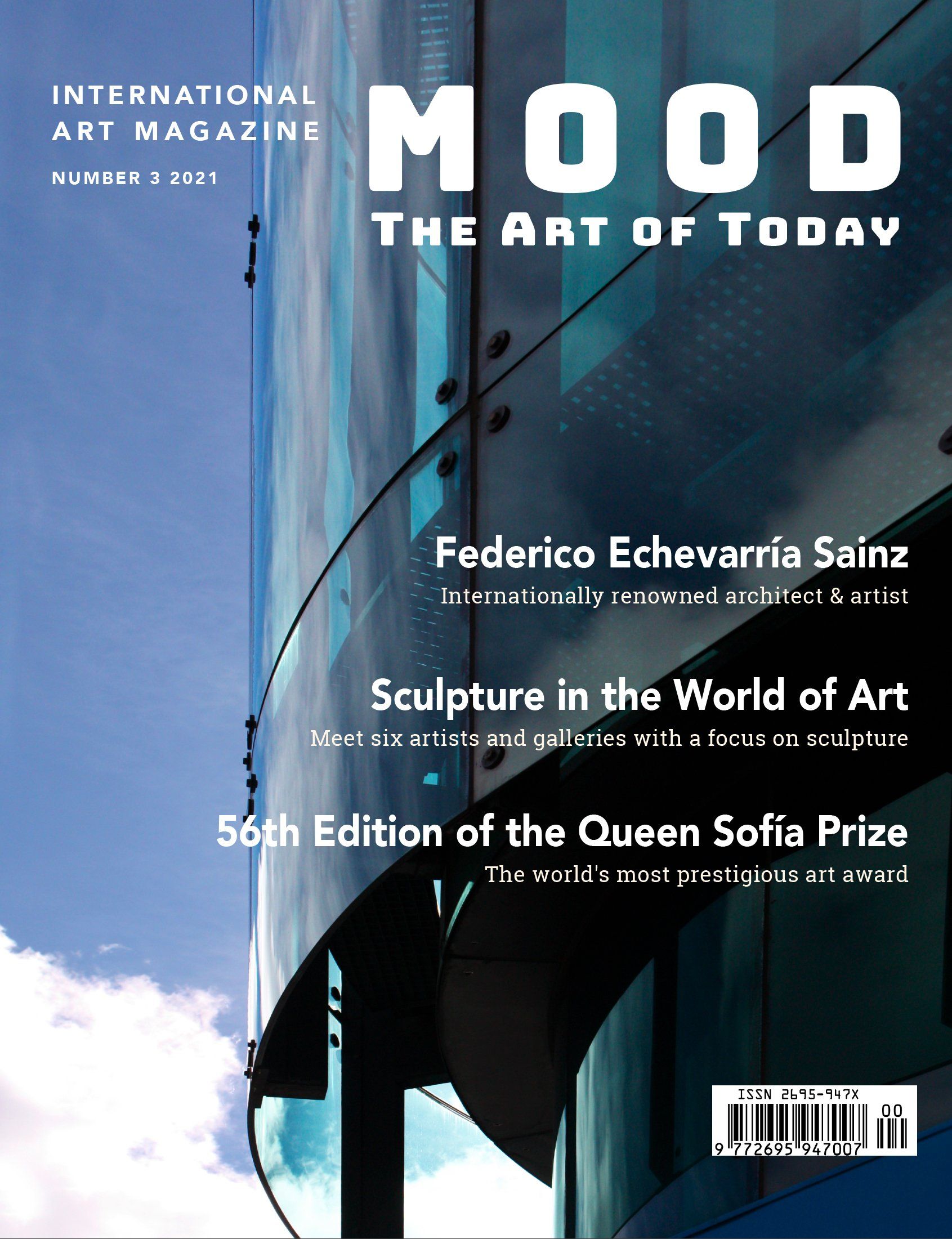PER INGE ISHEDEN
You never know what he has in mind, but the result is always amazing!
A painting always begins as a thought, an idea, a wish, a vision!
The vision has neither shapes nor colours, it is something elusive that is only there and is about to be realized. To create an image based on the vision, it is important to wander around among shapes and colours without losing the original feeling, the vision. You must not give up; you must continue to wander around until the vision begins to be realized in the form of a painting. And all the time you must stick to the original feeling, the vision, the compass direction, the dream you had when you took out the canvas, the paint, and the brushes.
It is difficult!
Too often the feeling fades during the work, and you start wandering around like an orienteer who, deep in the wild forest, has lost both the map and the compass. But sometimes the feeling deepens until you finally stand at a wonderful place you have never visited before. You just feel like it was somewhere …
But suddenly you find the way and the inspiration begins to flow ... and there in front of you is a masterpiece that not even you can do again.
The Swedish artist based in Stockholm, opens doors to the international art world.
He was born in Avesta, a small countryside town north of Stockholm in Sweden. Painting has always been his passion, something he could not live without. As a child he watched his mother draw colours from tubes, those wonderful brilliant glancing colours, and mixing them on her palette. He wanted to eat paint! In his teens he used all his free time to paint. The result was that he worked with art and in his free time he painted – that is, always.
‘My teacher at school explained to me the techniques of the artist Paul Cézanne. I was fascinated and studied his work in books and later in museums around Europe.’
After working 13 years as a schoolteacher, he started his career as a professional artist in the late 70s by creating a science fiction cartoon for adults, ‘Spindlarnas Rike’ (Kingdom of the Spiders). During that work he learnt the composition technique he now practises in his paintings, including the use of quadratic canvases.
He started mixing the two conventional painting techniques he learnt in the art school, with brush and knife; then successively adding dripping, splashing, and even pouring paint onto the canvases. He discovered the possibilities of transforming an old landscape painting into a portrait, a pear into the back of a woman. He looked for inspiration everywhere, not only within art but in magazines, comic books, illustrations, old prints, odd road signs, whatever. The colour combination on a big truck, the colour pattern on a fish, the red light from a traffic sign …
That chaotic mixture slowly turned into his very personal expression, where for every new situation he chooses various parts of his repertoire and special ways of thinking and solving problems.
'When I paint, the painting is
my whole world, I live
inside the picture'
‘It is very difficult for me to satisfy in a comment to an author of incomparable imagination who undoubtedly already occupies a privileged place in the history of contemporary art, capturing one of the most famous faces of cinema, but from a different perspective than that of Andy Warhol –in fact, from a more interesting composition. The work of Isheden follows the matrix of his poetic superposition of images that are drawn in the visual game of his linear resources, always captivating with the force and luminosity of his brilliant ideas, which makes an ARTIST with all his letters.’
Christian
I extend to you,
An invitation to
My inferno....
My shadow, on a phantom’s flight
Witness seduction of what was once sane
You, a virtual voyeur in the dim night light
Bathe in my spa, a spring of burning pain
I extend to you
My heart in offering
Come taste of it...
It’s seasoned, and done well
And petrified with purpose not
Lick the flame, make it swell
Cleavage conceals fires forgot
I extend to you
My fuming, empty head
Enter and ...
Breathe the smoke rings swirling in my mind
Gaze in ash adorned eyes, drink tears of wine
Given a thousand days, never to mend nor find
Diverging all the senses.
Was there not a sign?
My hand to play
A child’s game...
Of I hide... and you never seek me
Screams of fright, terror and toys
Paper and pencil friends, allow me to be
Papa you love me? How I hate those boys!
I invite you to
Come and smell
The scent of...
What embers remain of love’s-tired touch
Merciless, silent letters created the fuel
Self-destructing, upon the fire’s hungry clutch
Coals smoulder, a fattening feast for the cruel
Please, don’t let this pathetic visage
scare you away
my invite
...is always open
- Angelica Rose
'INFERNO'
‘This image is one of my absolute favourites from your paintings! It seems to tell a complete story and its content raises many questions.
Who is the writer? Who is the boy at the door watching? Are there reports of secret passions that the child’s father writes down? Or could the boy and the man be the same person? Is it possible for the artist to relate his own life in three dimensions?
It is truly a representation that draws the viewer under its spell and points out the hidden parts, desires, and lusts in each person. I can barely take my eyes off this image.’
- Renate Kaufmann
‘I feel my eyes tearing up.
what should I do with my eyes?
what should I watch?
- you ask what you should watch.
I ask how I should live.
it’s the same thing.’
- Pentru Ochi
‘Regarding his painting, Inferno, I interpreted it as a man sitting at his desk, writing his memoirs, remembering better, happier times in the past, and now feeling burdened by the responsibilities of family, etc. His son stands in the door behind him, looking at his dad and wishing he would play with him. My daughter’s interpretation is that the little boy is the man at the desk and is part of the memory.
- Gypsy
Your painting Inferno reminds me of a poem I wrote. Sometimes I draft poems to go with my own art, and looking at Inferno made me think of this one:
Marshmallow Dream
This is not a marshmallow
dry and white
pure
powdered as dignitary wigs
perched on heads of
Mozart or Marie Antoinette
plucked
chosen one
prepped for consumption
lapped up as from tongues of
innocent kittens
false assumption
of cloud or whipped cream
spun cotton between
suede thighs
Rather this is
some dark dream
moist sticky lust
pulled apart by thumbs
and peering eyes
- Lara
Sometime in 1967, I first heard the song ‘Hey Joe’ on the radio. An icy cool distanced voice and a plastic, moving, guitar playing that did not resemble anything I had experienced before. Soon came a sequel, ‘The Wind Cries Mary.’ The artist turned out to be named Jimi Hendrix and was suddenly world famous. In 1970 he was just as suddenly gone. Died of an overdose, only 28 years old. Like a crackling firework that suddenly lights up a black night sky, and then just as suddenly dies away again. ‘Stars and stripes’ with machine gun mats and diving bombers...
After Hendrix, nothing was the same; he had forever revolutionized guitar playing. Countless are the world stars who admired and were influenced by him. And when, for example, Bob Dylan heard Hendrix perform ‘All Along the Watchtower’, it was the only possible version, even though Dylan wrote the song himself. But imitating Jimi Hendrix is almost impossible. He was left-handed and played with the guitar turned in the ‘wrong’ direction, but he did not restring it, so the lowest string was at the bottom of the fretboard. This meant that his grip technique became completely different from other guitarists.
Even though Jimi Hendrix died in 1970, he left his mark on the entire 70s, and in terms of stage performance as well. Towards the end, he displayed a destructive move, burning up and smashing guitars. But at the same time, his late contacts with Miles Davis show that he may have been on his way to jazz music.
Hendrix performed several times in Sweden. I was at that time strictly a busy grandfather with a full-time teaching job in Aspudden. But several of my students went to his concerts, and one of them also had to borrow one of the school’s film cameras to secretly film. Had the camera been of better quality, that film could have drawn in half a fortune later ...
My portrait of Jimi Hendrix was the first of my ‘magic portraits’. Inspired by Dali’s painting Mae West, by Lena Svedberg’s chaotic drawings, and by Francis Bacon’s wounded, distorted portrait, I began to draw a pencil sketch. This was during my years as a teacher. The school was in an area with major social problems, drugs, alcohol abuse, fragmented homes. I still found that in the calmer classes, the best pedagogical method was to sit and work in the middle of the students.
When the sketch was finished, I started working at home with a large oil, 150 cm high. I worked on the painting for four years. It was then shown at Liljevalch’s spring salon in Stockholm that year, together with a painting of the punk ‘Sivan’ in the subway centre, and one of my still-lifes with a withered bouquet of flowers. My paintings attracted a lot of attention and were portrayed and commented on in both the press and on Swedish television.

